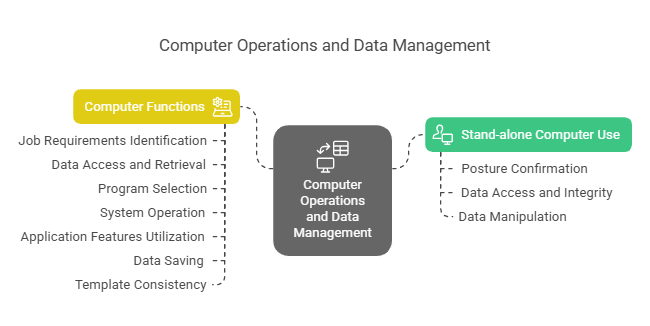Maximising Efficiency through Effective Data Management in Printing and Graphics
Posted by SkillMaker in Mar, 2025
What is a concise description of saved data when using computer systems in the printing and graphic arts sectors?

Saved data in the printing and graphics sectors refers to the digitised information stored and managed through computer systems. This includes files related to design, print settings, and customer specifications. It is crucial for efficient workflow and effective project management.
Listen to this article as a podcast
Why do people in the Printing and Graphics industry need saved data when using computer systems?
In the printing and graphics industry, saved data is fundamental for maintaining consistency, meeting client needs, and ensuring the integrity of the final product. It helps in reducing errors, efficiently managing projects, tracing jobs, and providing reliable information for decision-making.
“Efficient data management in the printing and graphic arts sectors ensures precision, reduces redundancies, and enhances project workflow.”
What are the key components or elements of saved data in the printing and graphics sectors?
Key components of saved data in these sectors include:
- File Management: Organising digital assets for easy access and use.
- Version Control: Tracking changes to provide history and accountability.
- Backup Solutions: Regularly storing copies to prevent data loss.
- Access Control: Ensuring only authorised personnel can modify data.
- Data Synchronization: Aligning data across devices and platforms for consistency.
What key terms, with descriptions, relate to saved data in the printing and graphics sectors?

Registered Trademark®
- Metadata: Information describing other data, useful for organisation and retrieval.
- Cloud Storage: A service model for storing data remotely.
- Digital Asset Management (DAM): A system for managing digital content.
- Encryption: Securing data through coding to deter unauthorised access.
- Data Integrity: Ensuring the accuracy and consistency of data.
Who is typically engaged with operating or implementing saved data in the printing and graphics sectors?
Graphic designers, print operators, IT specialists, project managers, and data management teams are typically responsible for handling saved data. Their roles involve creating, managing, and securing data across projects to maintain workflow efficiency and data integrity.
How does saved data when using computer systems align or integrate with other components of the Printing and Graphics industry in Australia?

Saved data integrates with workflow management, quality assurance, and compliance standards in the printing and graphics industry. It ensures project milestones are tracked, quality is maintained, and that all data handling aligns with both digital and print processes for a seamless operation.
Where can the student go to find out more information about saved data in the printing and graphics sectors?
What job roles would be knowledgeable about saved data in the printing and graphics sectors?
Roles include:
- Graphic Designers
- Print Technicians
- Project Managers
- IT Support Specialists
- Data Management Officers
What is saved data when using computer systems in the printing and graphics sectors like in relation to sports, family, or schools?

In sports, managing saved data is like tracking player statistics to enhance performance strategies. At home, it’s akin to organising family photos, ensuring they’re well stored and accessible. In schools, it relates to keeping student records safe and accurate, enabling a smooth educational process.
(The first edition of this post was generated by AI to provide affordable education and insights to a learner-hungry world. The author will edit, endorse, and update it with additional rich learning content.)
(Skillmaker – 2025)

 Post Tagged with
Post Tagged with